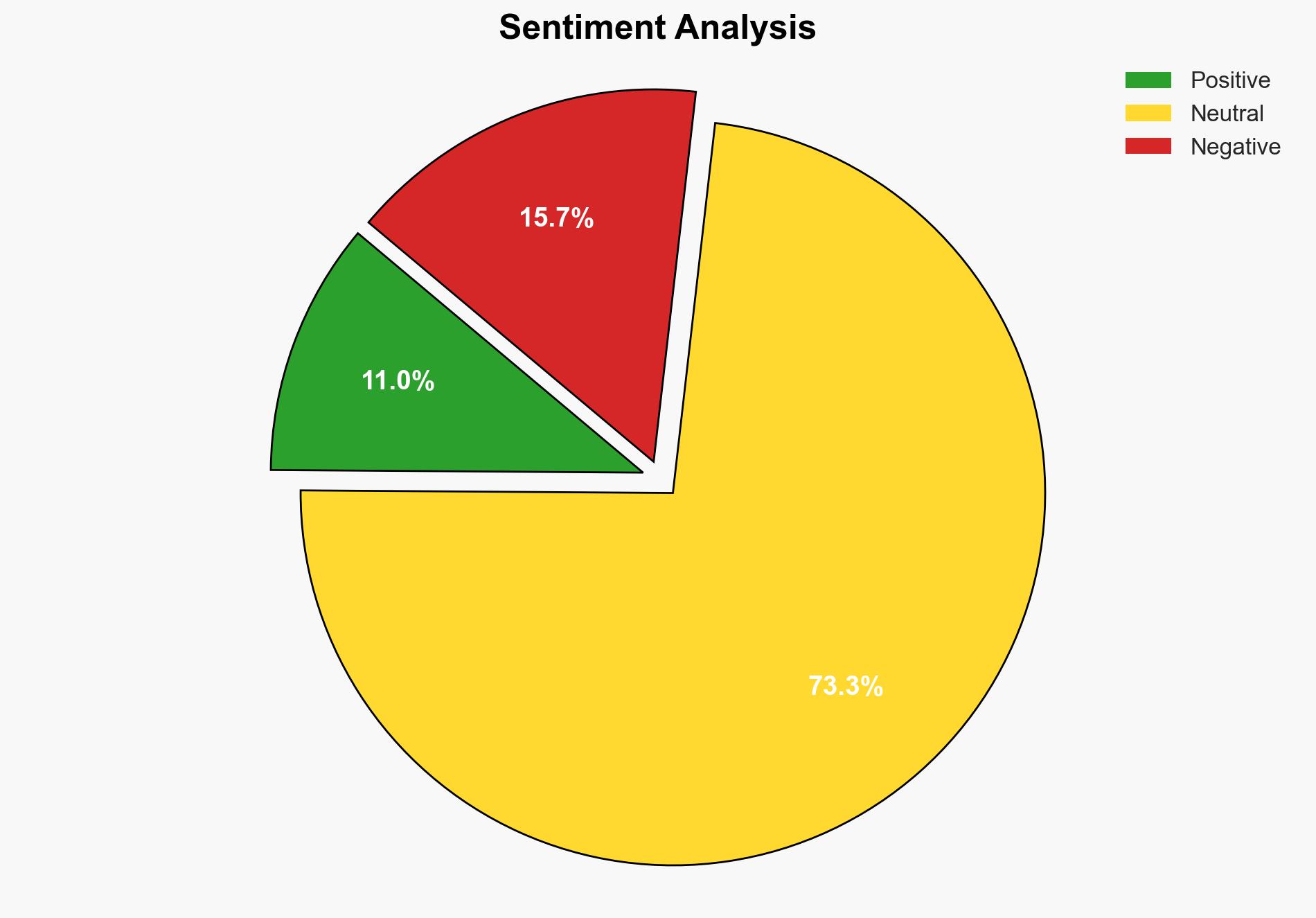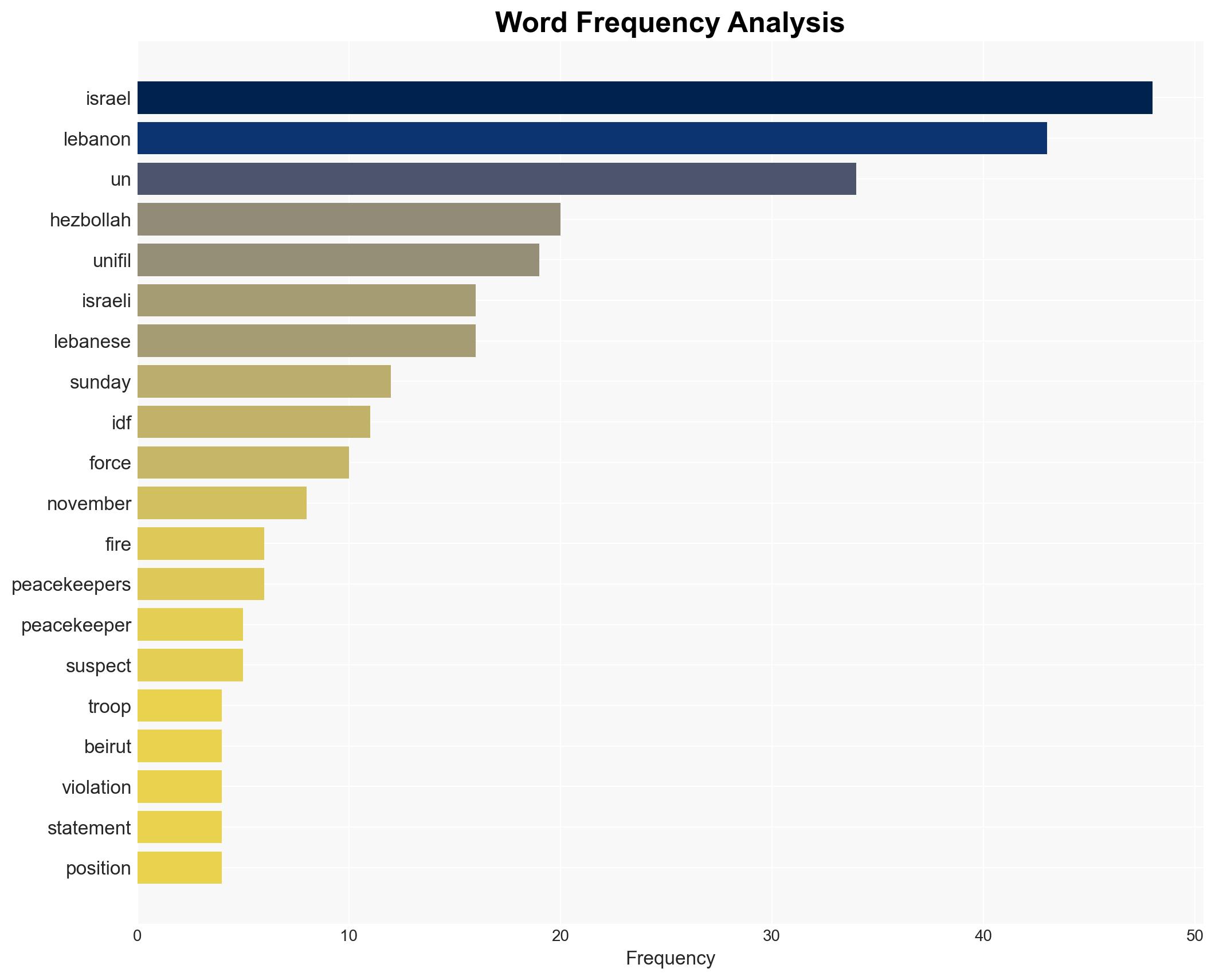Israeli troops fire at UN peacekeepers in Lebanon – DW (English)
Published on: 2025-11-16
AI-powered OSINT brief from verified open sources. Automated NLP signal extraction with human verification. See our Methodology and Why WorldWideWatchers.
Intelligence Report:
1. BLUF (Bottom Line Up Front)
The incident involving Israeli troops firing at UN peacekeepers in Lebanon is most likely a result of misidentification due to poor weather conditions rather than a deliberate act of aggression. This assessment is made with moderate confidence. It is recommended to enhance communication protocols between Israeli forces and UNIFIL to prevent future incidents and to maintain regional stability.
2. Competing Hypotheses
Hypothesis 1: The firing incident was a result of misidentification due to poor weather conditions, leading to the Israeli Defense Forces (IDF) mistakenly identifying UNIFIL peacekeepers as potential threats.
Hypothesis 2: The incident was a deliberate act by the IDF to assert dominance and send a warning to Hezbollah and other actors in the region, using the UN peacekeepers as a proxy target.
Hypothesis 1 is more likely given the IDF’s statement attributing the incident to poor weather conditions and the absence of any casualties, which suggests a lack of intent to harm. Hypothesis 2 is less supported due to the potential diplomatic fallout and the IDF’s historical cooperation with UNIFIL.
3. Key Assumptions and Red Flags
Assumptions include the belief that the IDF values its relationship with UNIFIL and that poor weather conditions can significantly impair visibility and identification. A red flag is the potential bias in Israeli statements, which may downplay the incident’s severity. Deception indicators include the possibility of both sides using the incident to advance their narratives regarding regional security dynamics.
4. Implications and Strategic Risks
The incident risks escalating tensions between Israel and Lebanon, potentially drawing in Hezbollah and increasing the likelihood of military engagements. Politically, it could strain Israel’s relations with the UN and other international actors. Economically, prolonged instability could impact regional trade and investment. Informationally, both sides may exploit the incident to influence domestic and international perceptions.
5. Recommendations and Outlook
- Enhance real-time communication and coordination mechanisms between IDF and UNIFIL to prevent misidentifications.
- Conduct joint training exercises to improve situational awareness and identification protocols.
- Engage in diplomatic dialogues to reaffirm commitments to UN Security Council Resolution 1701.
- Best-case scenario: Improved communication leads to reduced incidents and enhanced regional stability.
- Worst-case scenario: Miscommunication leads to further incidents, escalating into broader conflict.
- Most-likely scenario: Continued tension with sporadic incidents, but no significant escalation.
6. Key Individuals and Entities
No specific individuals are mentioned in the source text. Key entities include the Israeli Defense Forces (IDF), United Nations Interim Force in Lebanon (UNIFIL), and Hezbollah.
7. Thematic Tags
Structured Analytic Techniques Applied
- ACH 2.0: Reconstruct likely threat actor intentions via hypothesis testing and structured refutation.
- Indicators Development: Track radicalization signals and propaganda patterns to anticipate operational planning.
- Narrative Pattern Analysis: Analyze spread/adaptation of ideological narratives for recruitment/incitement signals.
Explore more:
Counter-Terrorism Briefs ·
Daily Summary ·
Support us
·





